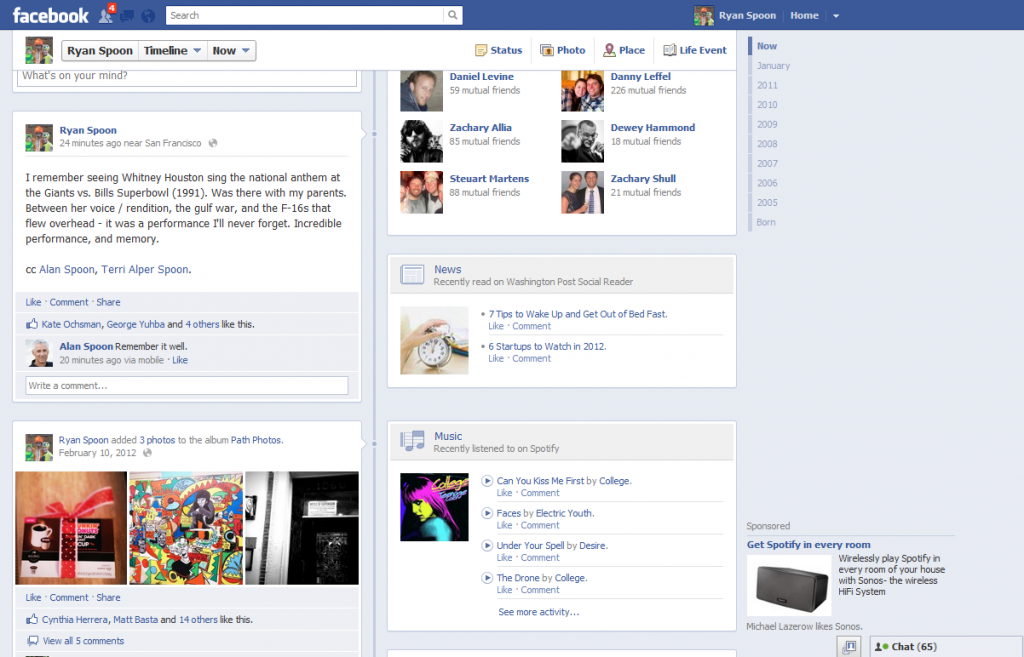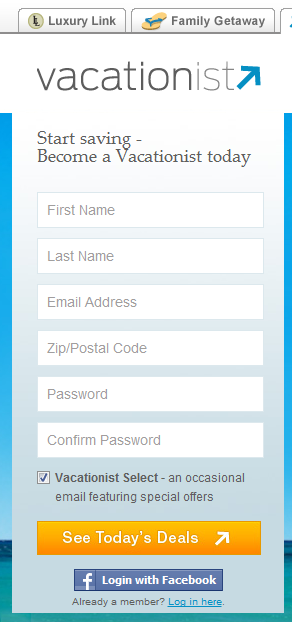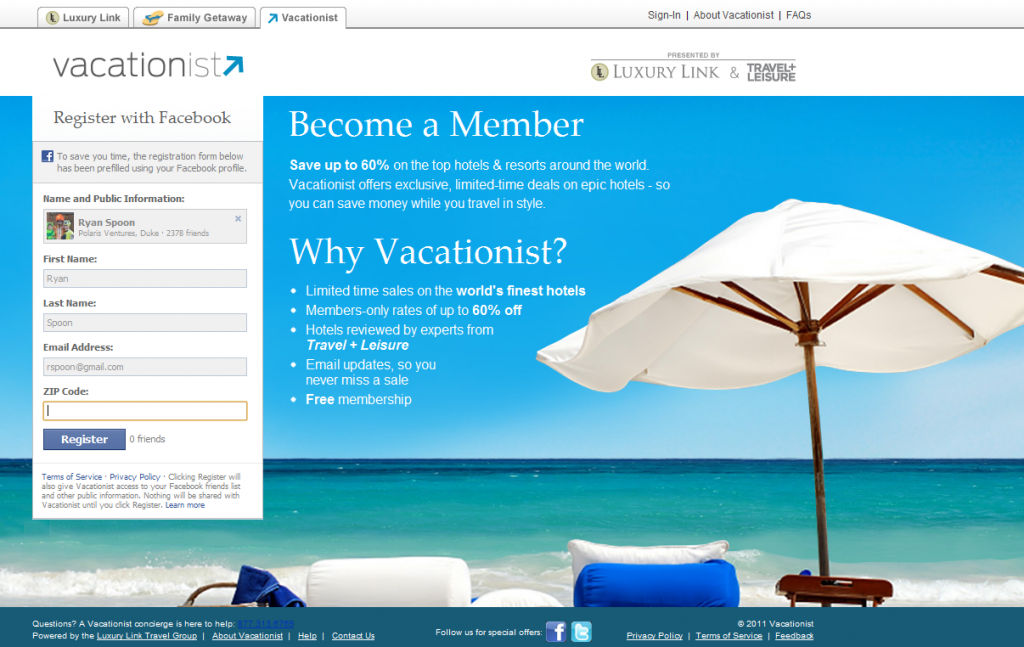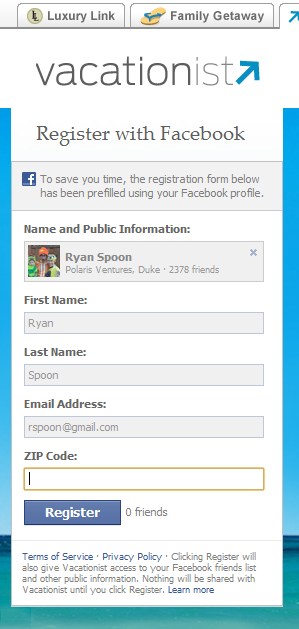This is among the best example of great advertising on Facebook I can find. Really is.I've seen more engaging ads. I've seen more creative or visually effective. But this is as relevant as it gets - and at the end of the day, I believe relevancy drives success. So what is it: an ad for Sonos, a product that allows me to "wirelessly play Spotify in every room of my house"
Of course it is not a coincidence that an ad for a Spotify related product appears on my Facebook timeline: I am a Spotify user. They know this and they are advertising against it. This ad is directly relevant to me and really the only reason I care to pay attention to it. It also sits beside the Spotify / Music portion of my timeline. That is equally powerful.
Note: the first screenshot is my Facebook profile page. The second screenshot is just an upclose of the Sonos ad sitting beside my Spotify unit.
















